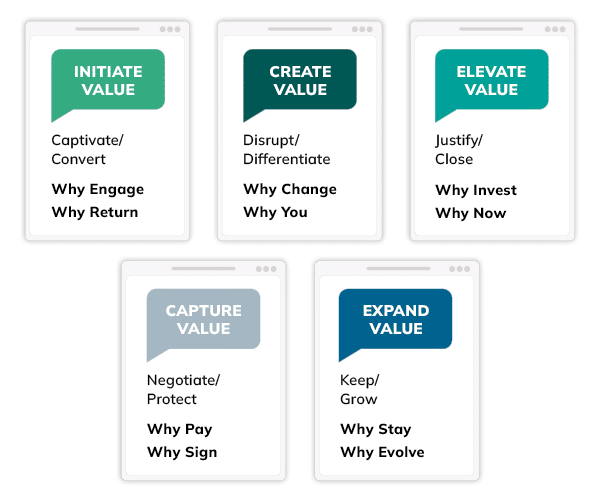Decision Meets the Art of Conversation
When you understand your buyers’ psychology—how they frame value and make choices—you can align your revenue growth strategy to the way buyers actually make decisions.
Ditch So-Called “Best Practices”
For years, sales organizations have relied on so-called “best practices” to increase confidence and improve execution. The problem is, best practices are based on opinions and guesswork—not science.
Our researchers rigorously study the hidden forces that motivate how and why people make decisions. It’s called decision science, and it combines the power of neuroscience, social psychology, and behavioral economics to explore the invisible forces that shape how human beings frame value and make choices.
When you replace guesswork with decision science, you can align your approach to the way your buyers actually make decisions.
Tailor Your Approach
Buying decisions don’t follow a predictable, predetermined path or sales process. Your prospects and customers are asking weighty, specific questions as they decide to buy from
you (or not).
We call these moments the Five Value Conversations. In each Value Conversation, you need to answer your buyer’s questions with tailored and persuasive messages, thought-provoking content, and research-backed skills to address the unique psychology and pressures within each of these critical moments.


Prioritize Your Growth Plays
The number one concern we hear from commercial leaders right now is uncertainty about their ability to execute their revenue growth strategy.
In fact, only 38 percent of CEOs are confident in their team’s ability to execute, according to Sales Benchmark Index.
That means that 62 percent—the majority—are not!
To close this confidence gap, you need to identify the specific initiatives you can launch to address your most pressing revenue challenges.
Enable Every Critical Moment
You can’t plan for competitive moves, market changes, or global economic events, but they happen all the time. And when your revenue is on the line, you can’t wait six months or more to train and enable your organization to respond.
These urgent situations call for a faster, more flexible approach—one that doesn’t depend on a long-term, “just-in-case” plan. You need to rally your team with a winning message, skills training, and enablement content to respond just in time and in the flow of work.





